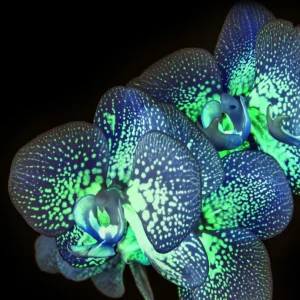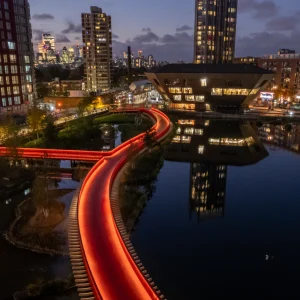As a part of the program, the USG recently opened its first LED illuminated parking garage, featuring more than 200 LED fixtures in the new 193,000 square feet structure.
Located on the north side of USG’s campus – the garage which adds an additional 600 parking spaces to the campus – features LED lighting applications throughout all decks, including elevator lobbies, stairwells, the pedestrian walkway and the outside driveway. The garage also includes daylight sensors to reduce power requirements and light pollution, and a white concrete top deck to regulate heating. USG expects a savings of 189,000 kilowatt hours per year by using energy-efficient LEDs.
Additionally, a stairwell canopy is equipped with LED lights powered by a solar panel and solar shades were installed on the south elevation of the elevator tower to reduce heat buildup in the elevator interior.
Other environmentally sustainable design elements are designated parking spaces for hybrid, carpool vehicles and bicycles, reclaimed green spaces, an energy-efficient elevator, measures to reduce water runoff and the use of materials with recyclable content during construction. During the garage’s construction process, more than 70% of the waste created was recycled.
The environmentally sustainable parking garage is adjacent to the Camille Kendall Academic Center, the largest green higher education building in the state of Maryland, and one of the first University System of Maryland buildings to achieve Leadership in Energy and Environmental Design (LEED) Gold certification through the U.S. Green Building Council.
Karen Mitchell, director of administration and finance at USG stated that, following initial LED lighting deployment at the new parking garage, the lighting at parking lot number two, on the south side of campus, has undergone a change of 23 LED fixtures, which have replaced 31 high-pressure sodium and metal halide fixtures.
The LED University initiative is a growing international community of universities working to evaluate, deploy and promote LED lighting across their campus infrastructures to save energy, protect the environment, reduce maintenance costs and provide better light quality for improved visibility and safety.





